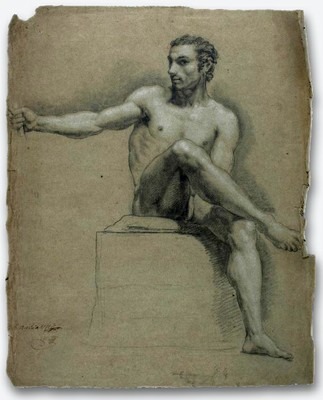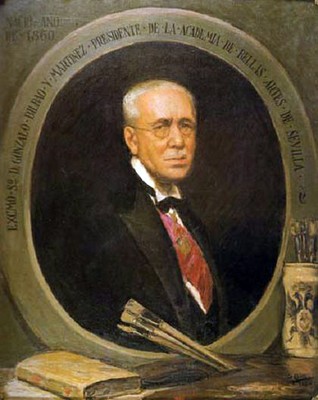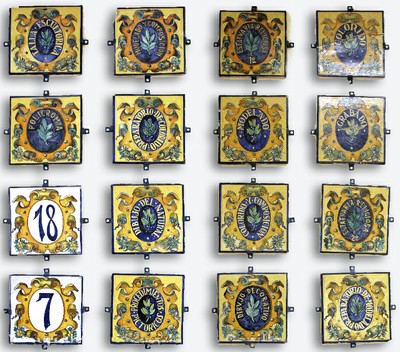Dean's Welcome and History
 |
|
Welcome to the University of Seville Faculty of Fine Arts webpage! This webpage is meant to be an useful tool to provide information to all who are looking for instructions about our faculty. Also, this is an efficient medium for those who already belong to the university. The Faculty of Fine Arts of the University of Seville is one of the most important training centres in Spain, whose origins can be tracedback to the 16th century. Currently, the centre offers two bachelor's degrees: Bachelor of Fine Arts and Bachelor of Conservation and Restoration of Cultural Properties. There are also two postgraduate programmes, a PhD in Art and Patrimony and a Master of Art: Idea and Production. Our faculty combines in its study programme the teaching of the traditional techniques and art restoration (signs of our identity) as well as the advanced technological knowledge that exits nowadays in order to complete our student's training with a solid theoretical formation about the art conception and its historical evolution. In this way we expect to connect the practical and theoretical training that started in the past to project into the future. Additionally, our academic courses transcend the academic spheres to penetrate into the cultural life of our city through the organization of exhibitions and diverse cultural activities and social interactions, to promote internships, development cooperation and international relations. In order to provide all of these activities and to contribute to the progress of the artistic knowledge we have the cooperation of all members from our centre: professors, students and administration staff. We do our best to provide unparallelled quality and innovation in our services.
|
Historical Review
The precedents of the Faculty of Fine Arts of Seville are traced back to 1660, when three famous painters settled in the city - Bartolomé Esteban Murillo, Juan de Valdés Leal and Herrera el Mozo - they founded the "Academia de Nobles Artes" (Academy of Noble Arts). It was the first artistic educational institution of the city, whose headquarter were in "Casa Lonja" ("Archivo General de Indias" nowadays). Its teachings included Sculpture, Painting and Architecture.
In the second half of the 18th century, the academy adopted the French style of illustration, following the steps of the "Real Academia de San Fernando de Madrid."
In 1771, thanks to Don Francisco de Bruna y Ahumada, deputy mayor of the "Reales Alcázares", the academy obtained the protection of King Charles III, who backed the academy with financial support.
 |
 |
|
|
|
The new institution, governed by similar regulations to the "Escuela de las Tres Nobles Artes" of Valencia, settled in "Reales Alcázares". Its studies were based on anthropomorphism nature, the representation of the human body through the copy of classic statues and real models. Moreover, the syllabus had diverse scientific disciplines like mathematics and geometry, etc.
In 1843 the governor Doña María Cristina, in the name of her daughter the Queen Elizabeth II, gave the institution the status of Academy. From that moment on, it was called the "Real Academia de Nobles Artes de Santa Isabel", in homage to the Queen. This residency was established then in the convent of "San Acacio".
Besides the artistic teachings, the new institution became involved in other cultural activities related to the art policy of the city, as the protection of monuments and art object or the opening of "Museo de Bellas Artes".
In the mid 20th century, Spain decided to remodel the teaching of Fine Arts. Its principal act was the promulgation of the "Reform of the Public Training" ("Reforma de la Instrucción Pública") in 1857. Because of this, the "Fine Arts School" was established for superior education in Painting, Sculpture and Engraving. At the same time, the "School of Architecture" was opened, and it separated from the rest of the Arts program.
In 1940 the Graduate School of Fine Arts of Saint Elizabeth of Hungary was founded. This organization was lead by Don José Hernández Díaz and Don Joaquín Romero Murube, who were deputies named by the National Education Ministry. They took care of the organization of the center and selected the buildings and the professors.
They elevated the General Management of Fine Arts with esteemed local artists. The school was established in the house of the painter, Gonzalo Bilbao. The surface of the building (650 m2 divided in two floors) was reorganized and distributed into four studios. In 1944, the installations increased with the appropriation of adjacent buildings. It is the same building which has been recently annexed to our faculty of Fine Arts.
 |
| Gonzalo Bilbao. Self-portrait. |
Some of the first professors were: Don Mauricio Tinico Ortiz, professor of the course "Preparation for Modelling"; Don Alberto Balbontín Ortas, professor of the course "Ornamental Drawing"; Don Antonio Díaz Fernández, professor of "Preparation of Colouring", and Don Alfonso Grosso, professor of the course "Colouring and Composition".
 |
| Tiles with the name of the room from the Graduate School of Fine Arts of Saint Elizabeth of Hungary in the building "Gonzalo Bilbao". |
The affiliation of the Graduate School of Fine Arts of the University as a faculty was stablished by the General Education Law in 1970.
The task was not easy and there were many problems. The procedure lasted five years because of the old-fashion plans that schools had, but also the Ministry did not help to resolve these problems.
Finally, it was accomplished. The reorganization of the artistic education was elaborate with new plans of studies in the different faculties, and also the titles of the professors were changed from Drawing professors to "Licenciado" of Fine Arts.
Nowadays, the faculty is in the process of moving toward the "European Higher Education Area". The aim is to combine the original traditions of the facility with new technologies and innovative approaches, which are highly sought after by many.















